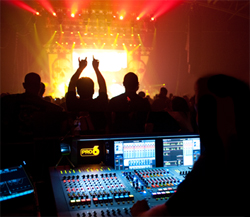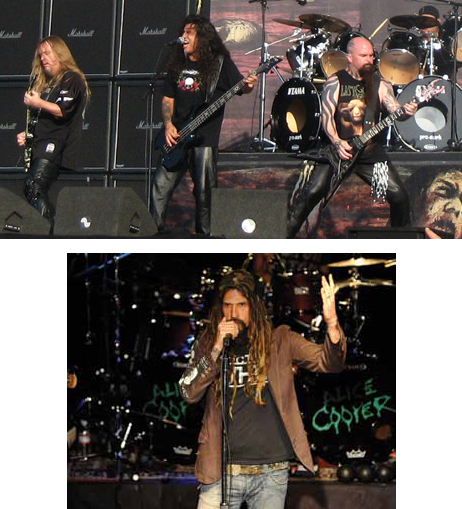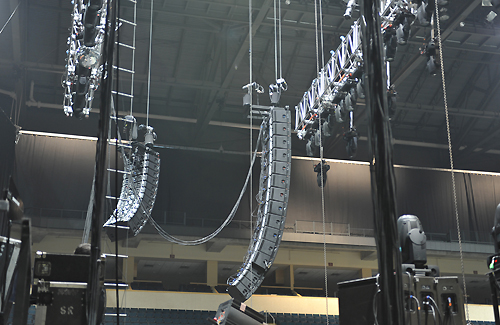Although Slayer and Rob Zombie have crossed paths on the road in recent years, the recent Hell on Earth co-headline concert tour of North American arenas and sheds marked the first time the two metal heavyweights have toured together in over a decade.
Slayer’s musical style is defined by fast tremolo picking, double bass drumming, and shouted (or chanted) vocals, and they’re recognized as one of the “big four” thrash metal acts, joined by Metallica, Megadeth and Anthrax.
After first gaining fame as the long time frontman for metal superstars White Zombie, Rob Zombie has built a thriving solo career in his own right, and is noted for his work with iconic artists such as Alice Cooper as well as his burgeoning career in horror films.
The sound reinforcement system, along with technical support, was provided by Escondido, CA-based Sound Image. System tech Andrew Dowling of Sound Image worked closely with both front of house mix engineers, Joel Lonky (Zombie) and Tim Quinby (Slayer), to ensure the system was up to the task of reproducing each band’s brand of live metal throughout the tour’s successful run.
Horsepower Matters
The choice of Adamson Systems line arrays as the system’s main loudspeakers came about late in the sound design process, but proved to work out well. “I’d never toured with an Adamson rig, but I’ve used it, so I had no qualms – I’m a firm believer in the fact that there are a bunch of great boxes on the market,” says Quinby. “It depends on the guy setting it up.”
That guy was Dowling, whose concerns were straightforward. “Headroom,” he says. “Horsepower really mattered on this one.”
That’s one of the reasons Sound Image specified Crown Audio I-Tech HD12000s amplifiers, he adds – three racks of eight I-Tech 12000s and another rack with four per side to drive 24 Adamson Y-Axis Y18 modules (3-way, dual-18) for mains, another 32 Y10 modules (3-way, dual-10) as side hangs, and 32 Adamson T21 SUB subwoofers (dual-21) per side.
Both engineers were pleased with the overall sound of the arrays, also crediting the efforts of Dowling and Adamson applications engineer Ewan McDonald, who traveled in support for a portion of the tour.
“It was pretty much on the money every night,” Quinby says. “It had the gas it needed to have and, most importantly, it transferred the impact from the band to the audience.”
That Big Rumble
Since ample headroom was most important in the low end, the subs (two stacks of eight T21s per side) were set up in an end-fire configuration.
“In end-fire, the rejection behind the array isn’t quite as good as a cardioid setup,” Dowling admits, “but it gives me a little more positive forward gain and cuts down on rumble where we don’t need it, which helps us toward more accurate low end.”
The T21’s Kevlar drivers also helped in that respect, he adds. “They’re more rigid, so if you hit an impact with the driver, it puts that into the room. I think it translates to a more accurate transient response, which is exactly what Tim is looking for.
In a mix like his, where there’s so much fast kick, that for it to not sound like it’s washing together, he needs a tight, punchy sub, but it still needs to be full frequency because he wants that big rumble at 40 Hz and below.”

















